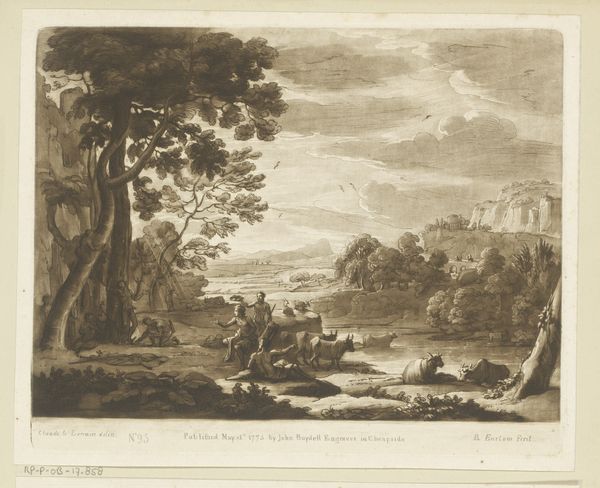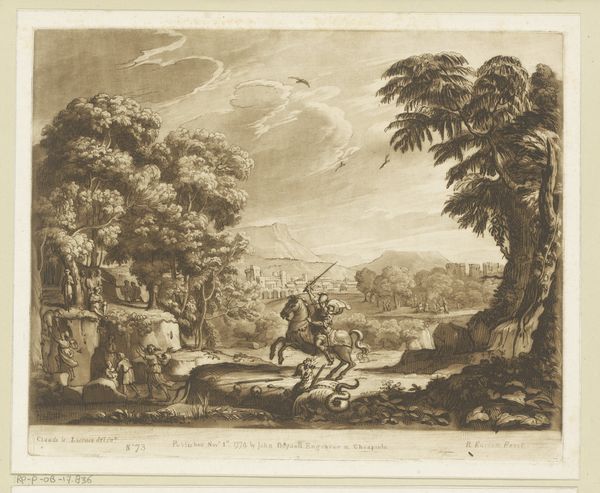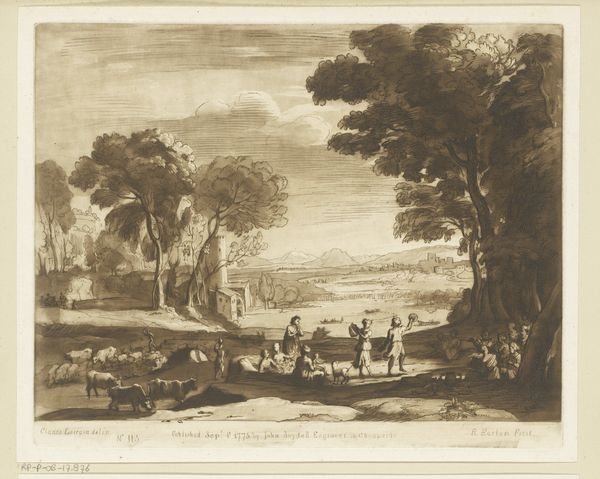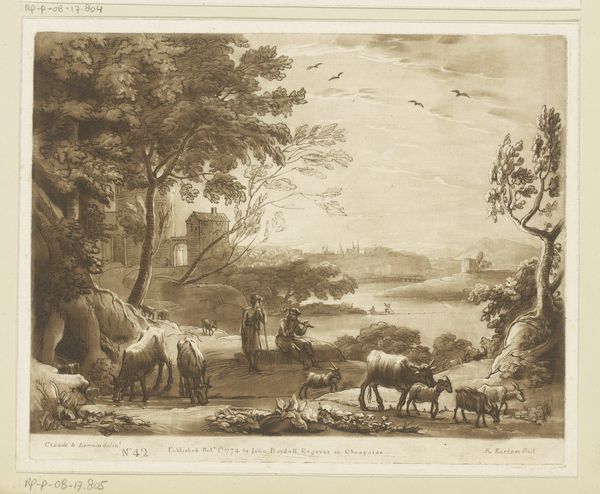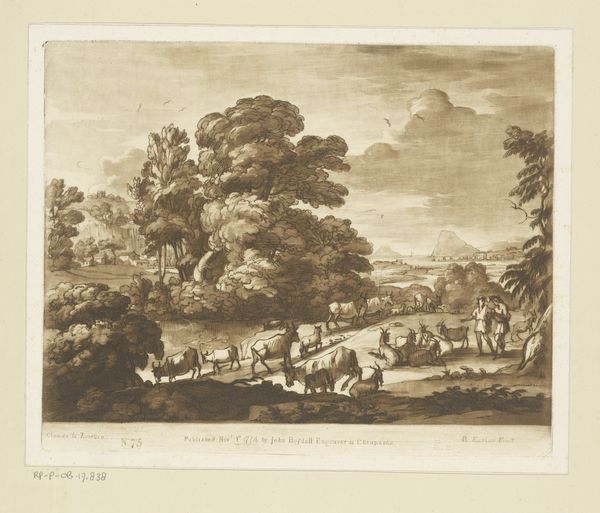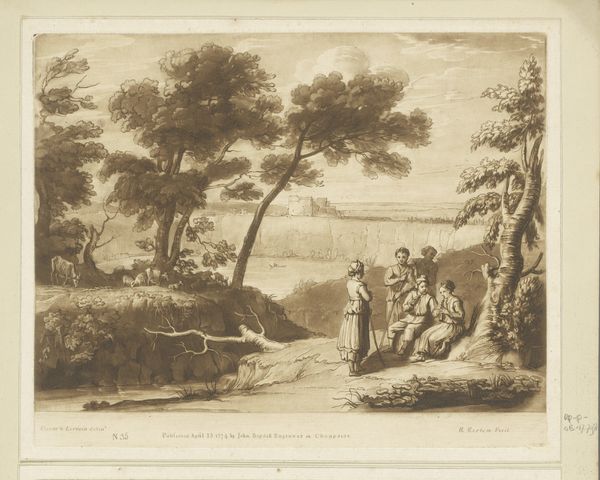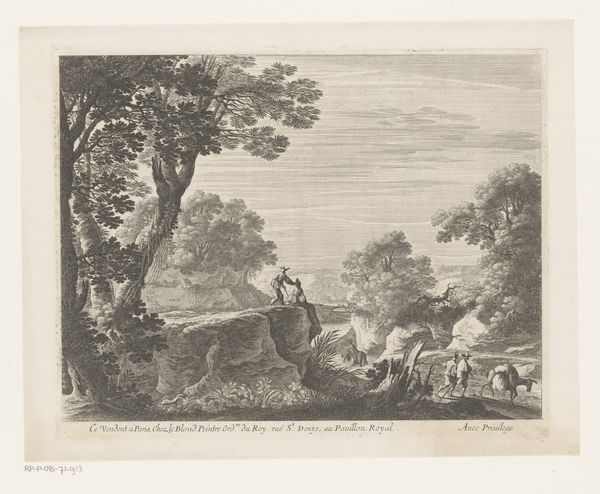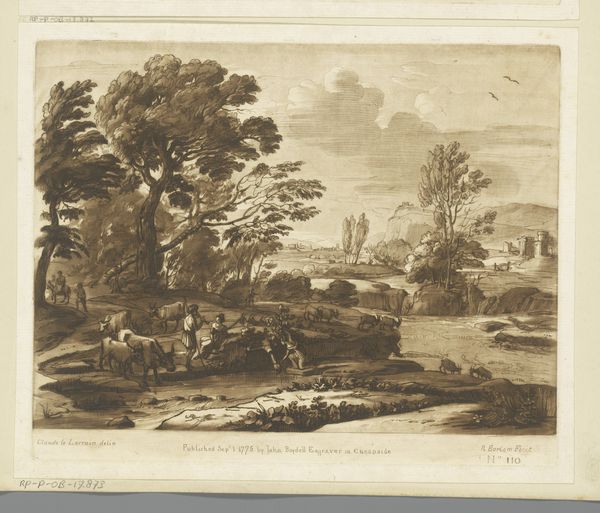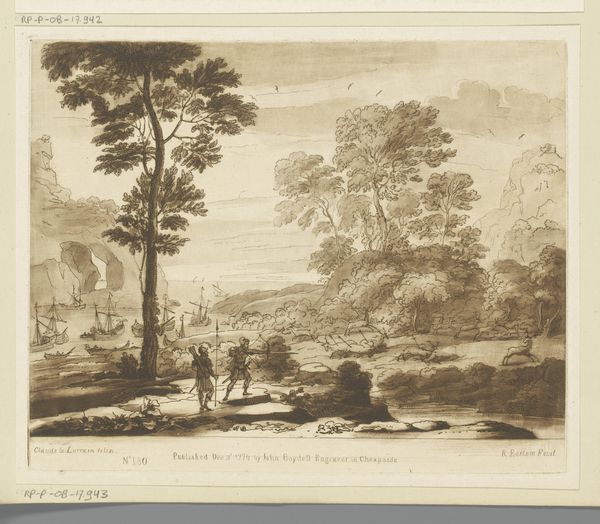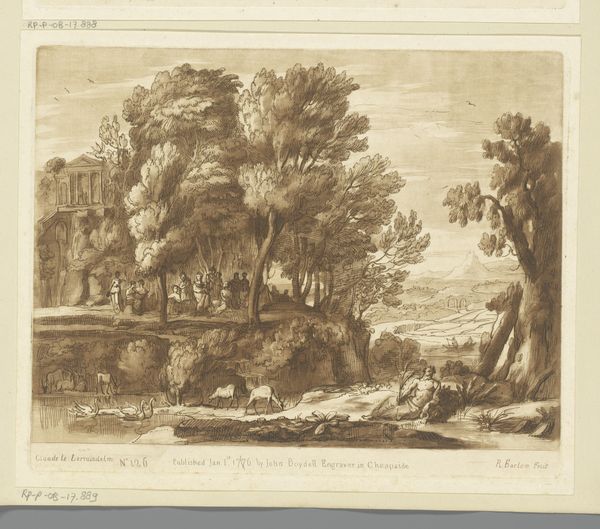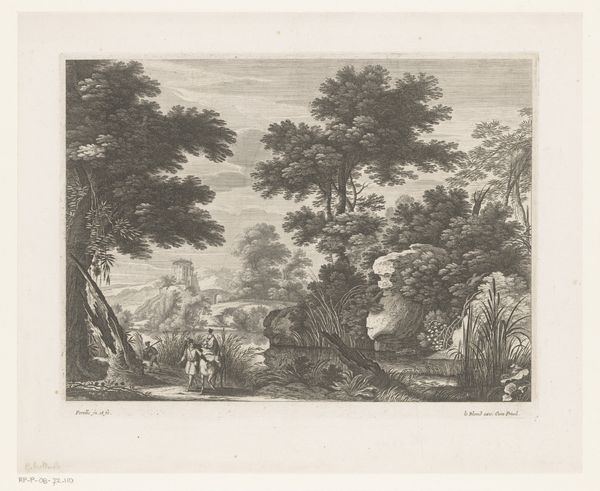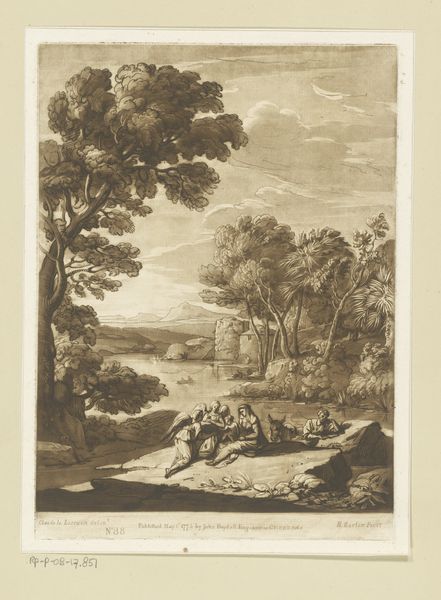
drawing, print, etching, charcoal
#
drawing
# print
#
etching
#
landscape
#
classical-realism
#
charcoal drawing
#
charcoal
#
history-painting
#
academic-art
Dimensions: height 208 mm, width 258 mm
Copyright: Rijks Museum: Open Domain
Editor: This is “Landschap met het oordeel van Paris,” possibly from 1775, attributed to Richard Earlom. It's a charcoal drawing, etched print depicting a classical scene. The composition, with the figures nestled into the landscape, has an almost stage-like quality. What do you see in this piece, considering its historical context? Curator: The "stage-like quality" you observe is a key aspect. During this period, art, especially historical scenes, played a vital role in constructing national identity and conveying moral messages. This work references a classical myth. How do you think that would resonate with an 18th-century audience? Editor: Perhaps it offered a sense of connection to a grand, idealized past? The figures seem both heroic and...decorative, almost. Curator: Exactly. It served as a moral lesson presented through a carefully constructed historical narrative. Consider the function of prints like this. Were they meant for mass consumption, or to cater to a particular social class? Editor: I imagine it was intended for a somewhat elite audience, people who would recognize the mythological subject matter and appreciate the allusion. The etching technique probably limited mass production too. Curator: Precisely. Also think about how landscape painting during this era frequently served to glorify the ruling class's property and position in society. This piece, though mythological, continues in this vein by idealizing not just the past but also a sense of order and control over the environment. It naturalizes power through an idyllic representation. Editor: I see how the idyllic scenery could subtly reinforce existing power structures. It gives a new perspective on art as cultural production. Curator: And hopefully a starting point to question whose stories are deemed worthy of representation and why. This approach allows us to view it not just as aesthetic expression but as an artifact embedded within complex power dynamics.
Comments
No comments
Be the first to comment and join the conversation on the ultimate creative platform.
